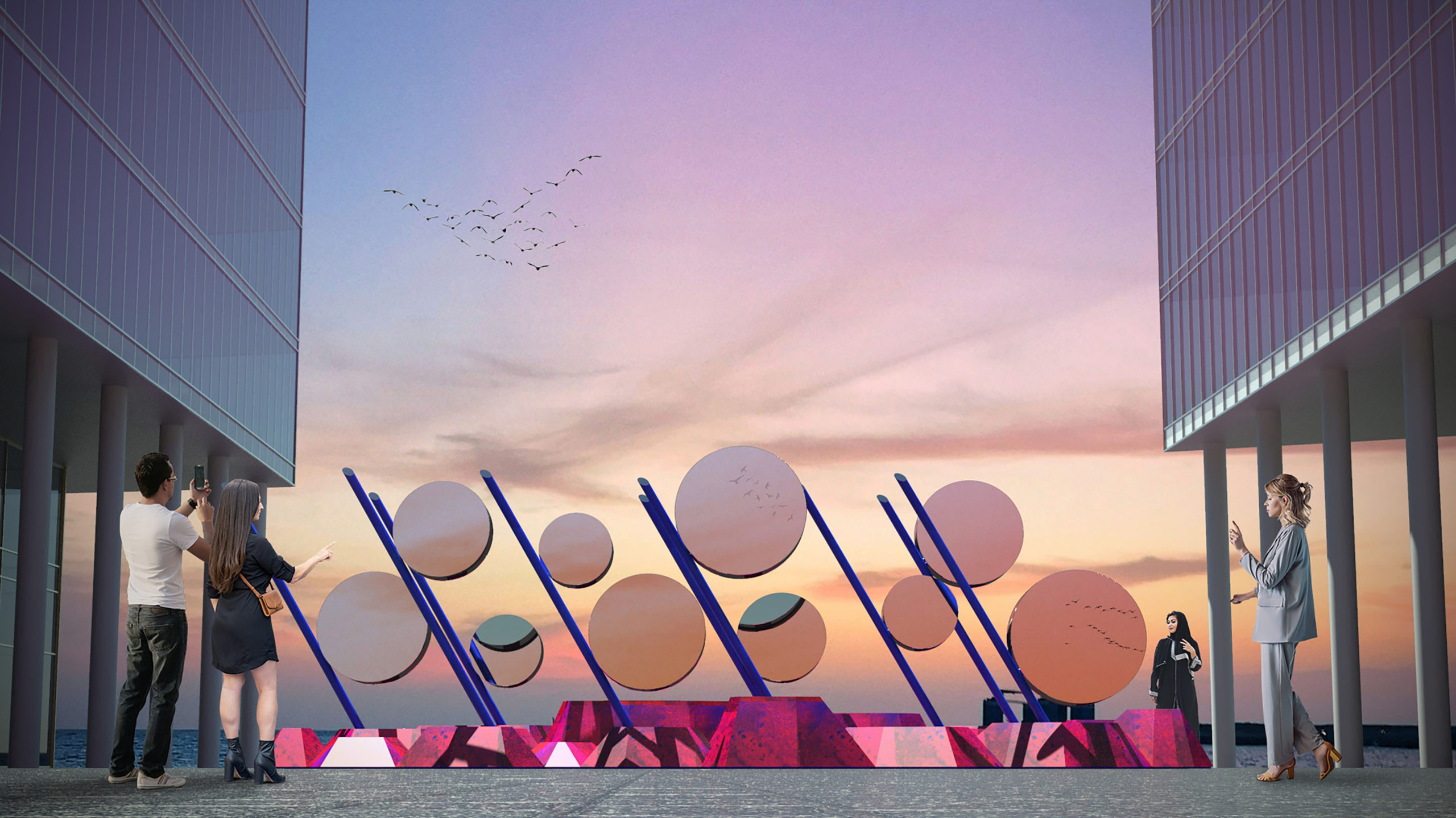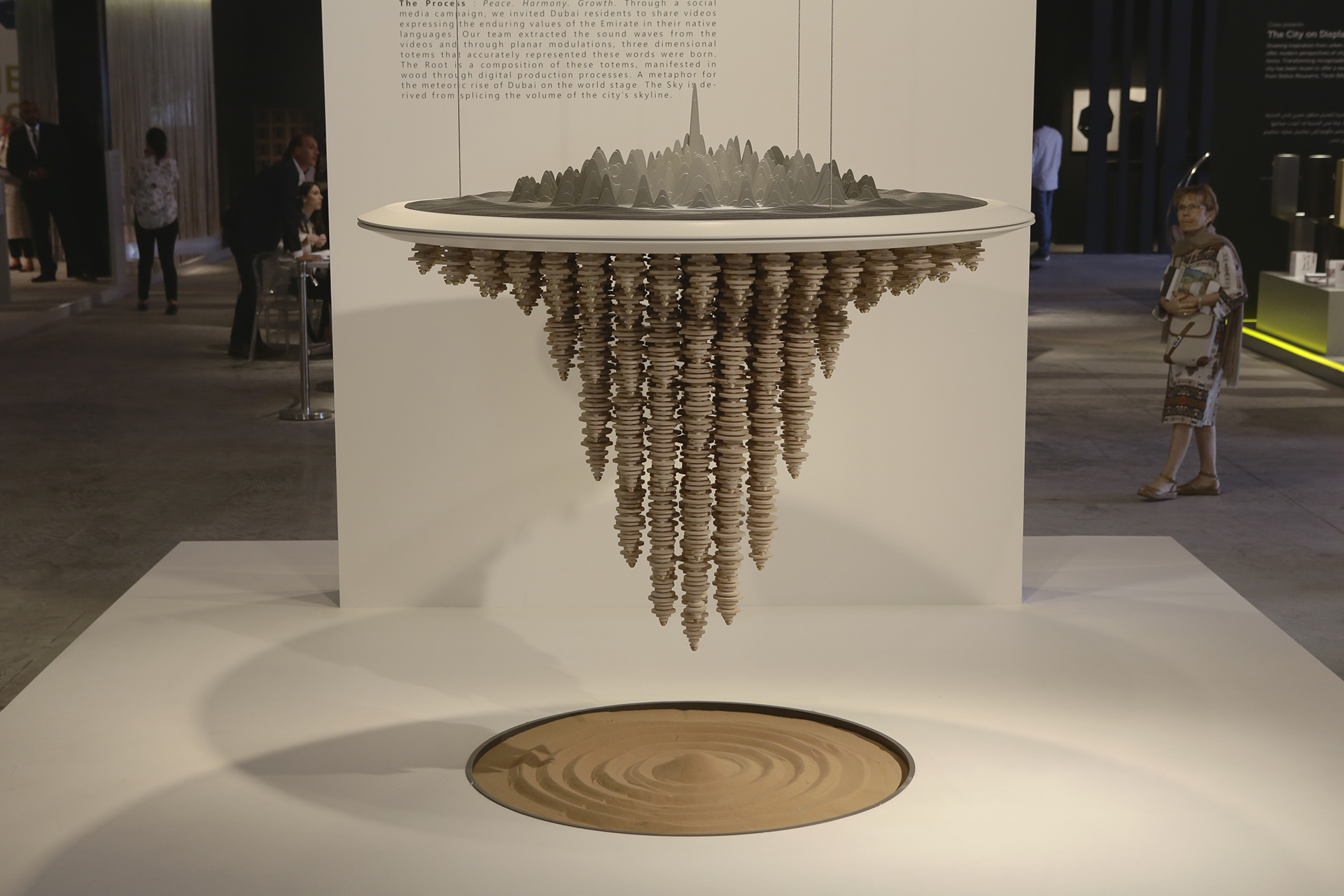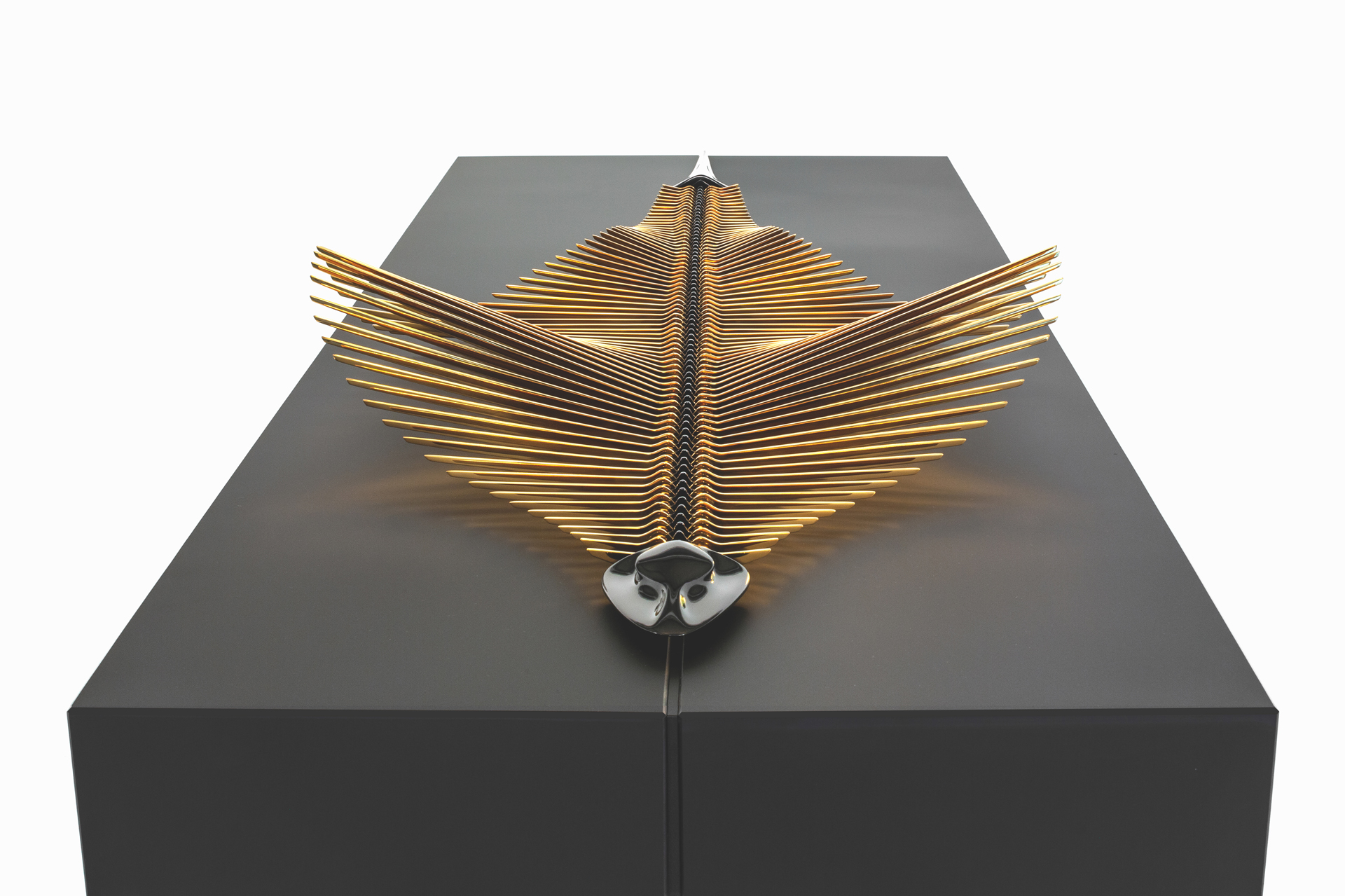
“UNLEASHING THE BEAUTY OF STINGRAY THROUGH KINETIC ART”
Merely glimpsing a stingray in pictures does not do justice to the magnificence of this aquatic creature. While encyclopedic descriptions may detail its rarity and seasonal breeding habits, they fail to capture the mesmerizing effect of watching its graceful movements, which can easily make one lose track of time.
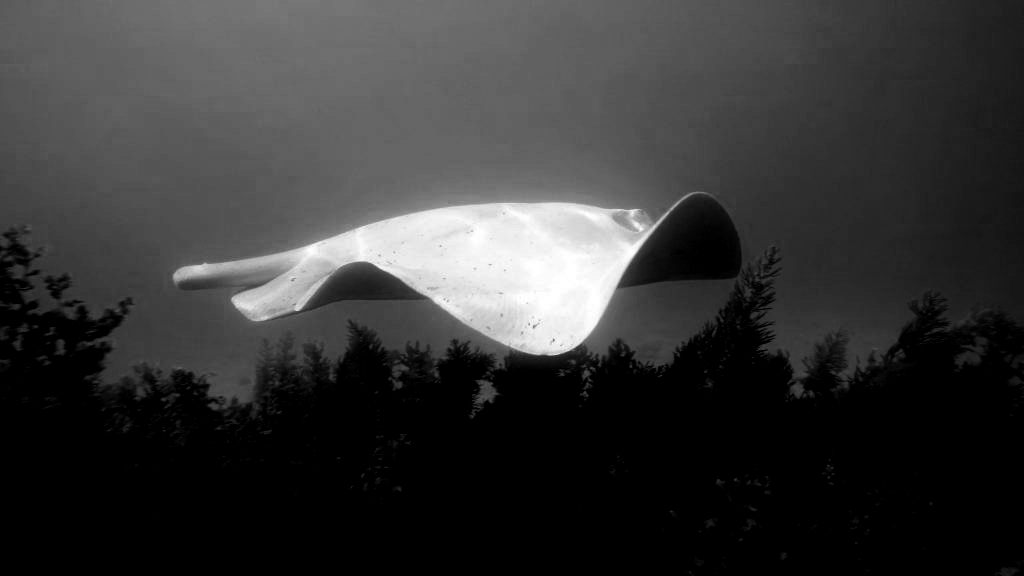
The Moment of Inspiration
During the summer of 2011, Indian Kinetic artists and founders Amrish Patel and Darshan Soni were captivated by the vivid marine life at the Dubai Aquarium. As they watched the shoals of fish swimming around, they became fascinated by the seamless motion and undulating contortions of a stunning stingray that floated down to their level. The experience left a lasting impression on them, and they were determined to take this newfound inspiration back to their dedicated kinetic art studio.
Their visit to the aquarium inspired them to create their first piece of kinetic art, which they incorporated the stingray’s elegant movements onto. Patel and Soni are Indian Kinetic artists who are passionate about using their work to convey the wonder of the natural world. Their experience with the amazing aquatic life of the Dubai Aquarium inspired them to create cutting-edge kinetic art pieces that probed the meeting point of motion and aesthetics in their studio.
How we took our Inspiration to Reality.
The Stingray’s graceful movements captivated us, so we immediately started drawing sketches of it. Many of our first ideas were poor attempts to give concrete form to the stirrings within us. We came to the conclusion that in order to forward with the Stingray design analysis, we needed to focus on the sinuous motion that had caught our interest. We looked at a lot of different design concepts, and it became obvious that imagination alone wouldn’t be sufficient. The behaviour, structure, and motion of the stingray required much research on our part.
So we studied the form of their body, the structure and functions of their physiological parts and attempted to gauge the reasoning and cause of their graceful motion. We carried out this study in the following steps.
Researching
Starting with a thorough examination of every facet of the amazing stingray, we set out to create something that was inspired by it. We looked everywhere during our investigation, from its tail to taxonomy.
We were able to fully utilise the beauty and intricacy of the fish by developing a thorough understanding of its features and characteristics. This understanding served as the cornerstone of our creative process since it enabled us to recognise and highlight the distinctive characteristics of our subject matter.
Studying the Form
We then began studying the form of a stingray. We looked at various pictures and sketched them out from different angles to understand what captured our attention. Once we could visualize the fish with clarity, we arrived at a more complete picture. After that, we started looking at its movement which had mesmerized us from the very start
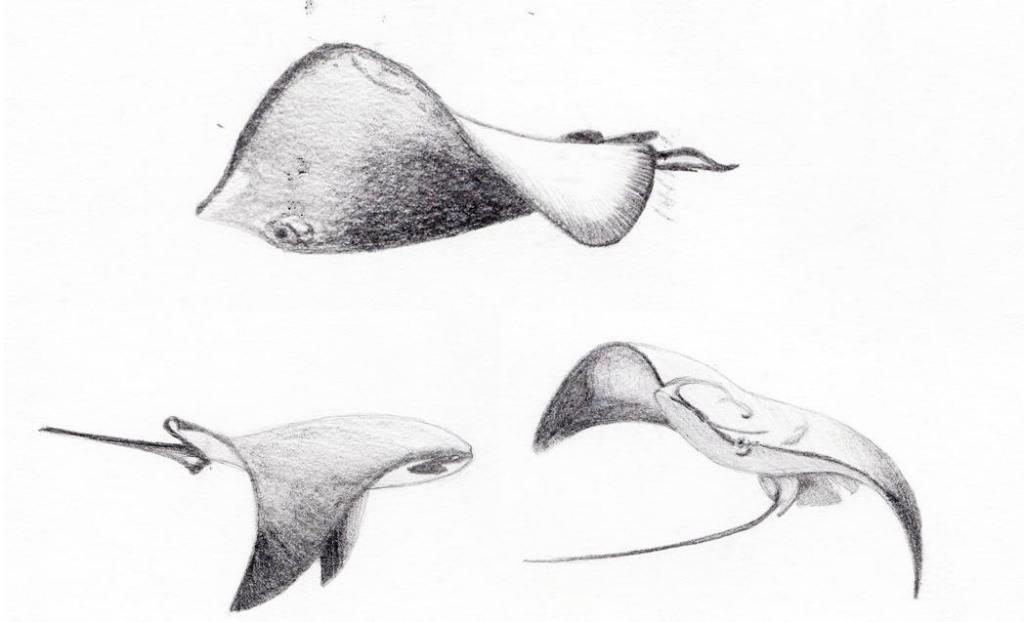
Studying the Movement
The movement of a Stingray is as peculiar to describe as perhaps it is to witness. The thin cloak-like body moves in a characteristic sine wave motion. Therefore we tried to deconstruct the movement in a mathematical representation before moving on to working on the mechanical movement. This entailed sketching out various stages. The patterns of movement needed to be understood further though through virtual and modelling. This computer modelling exercise plugged in directly while modelling the sculpture later as well.
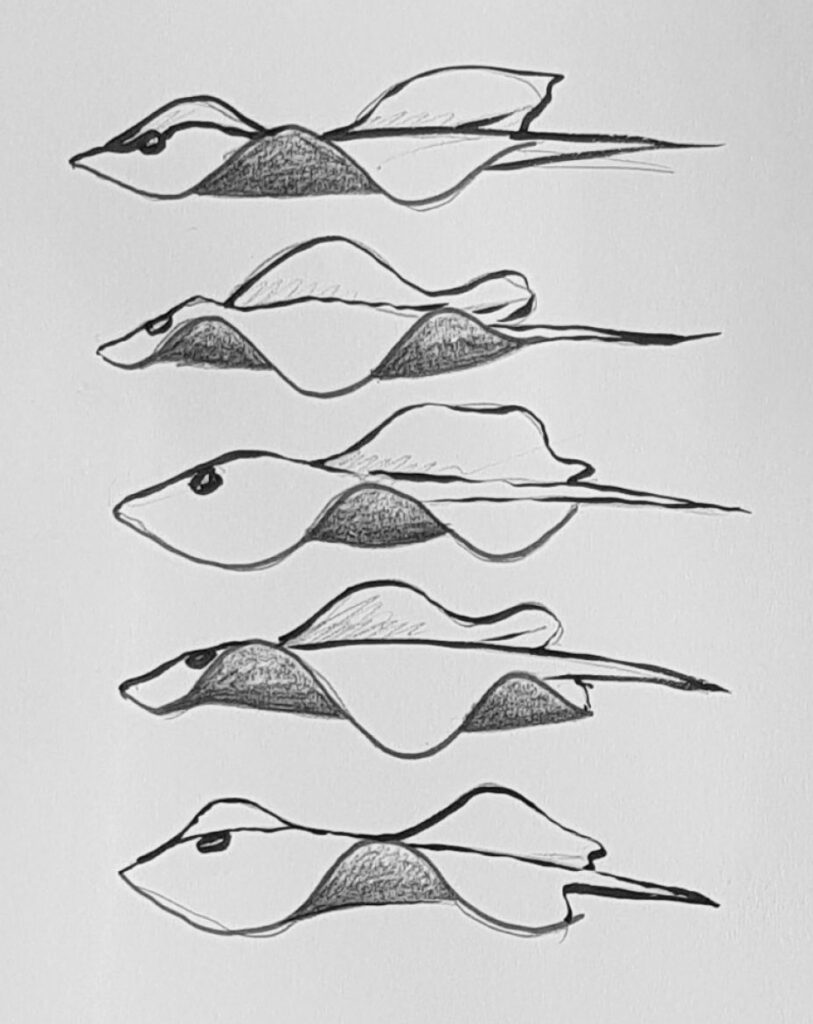
Studying the Structure
The structure of the stingray; which is to say, its skeleton is what allows this majestic movement to happen. Seeing these skeletal structures opened us up to what is happening, quite literally, beneath the surface. An understanding of the joints helped in designing the parts of the kinetic sculpture and proportions and the morphology was derivative of this skeletal structure too.
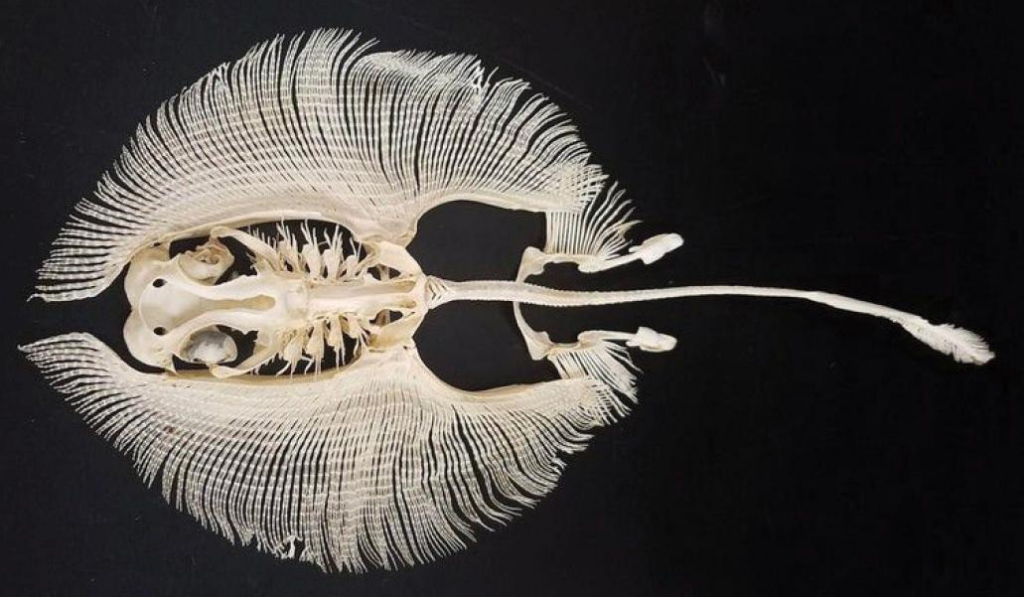
In this manner, these studies proved to be essential to the work in taking the inspiration to the construction of the sculpture from the overall idea at the conceptual level to the last bit of detail.
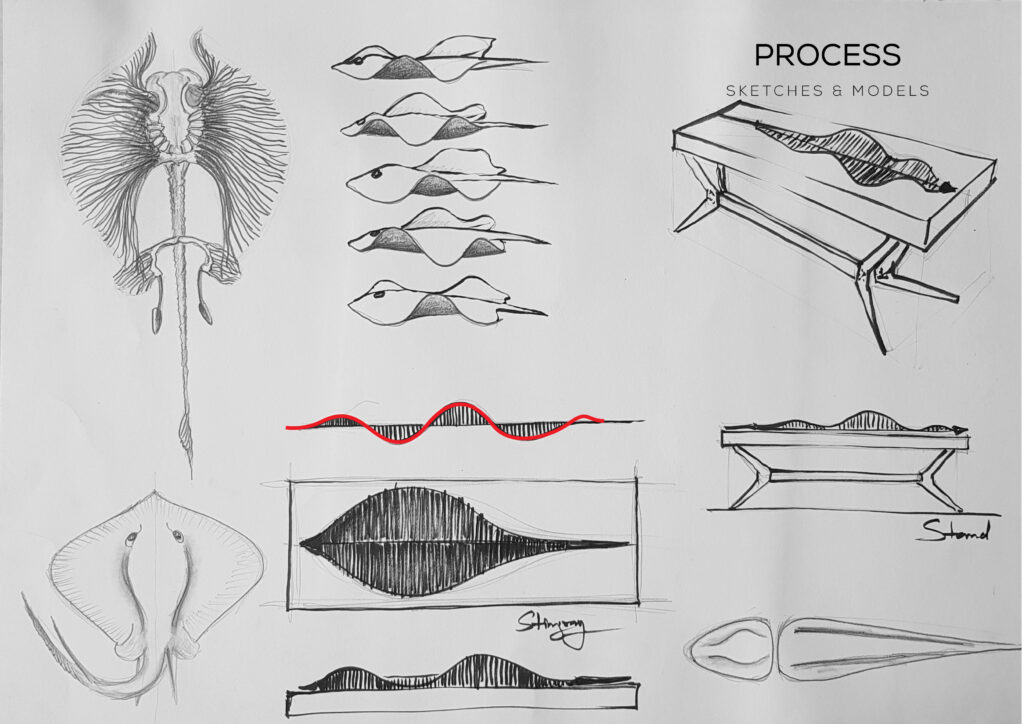
Construction
These studies enabled us to take the conceptual sketches to the computer so could we could start modelling. Developing different scripts, the modelling software provided us with the scale and technical capability to configure every part of the sculpture. We spent some time fiddling with the measurements and calculations, resolving pragmatic and aesthetic concerns.
In the making, the idea was to use materials that provided fine quality and durability for a high end experience. The parts were cast in aluminium using special casts prepared for each part. The aluminium poured into these casts was dried, cooled and polished.
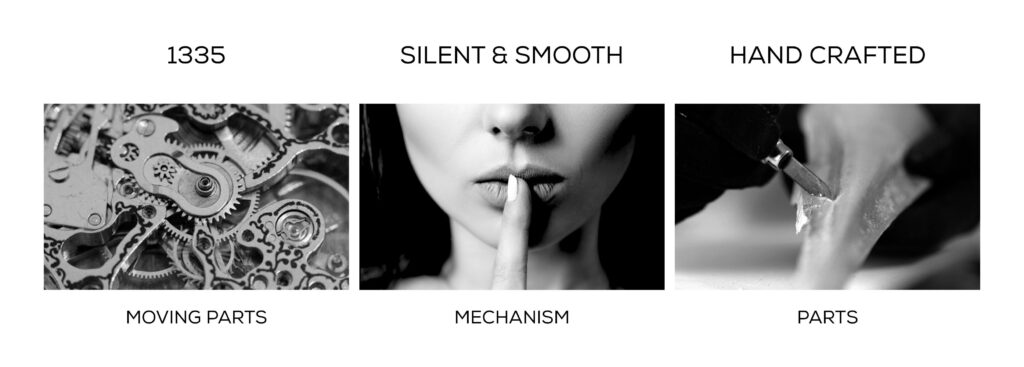
The Outcome
Stingray: the Kinetic Sculpture is an assembly of 1335 moving parts that work harmoniously in absolute silence.
Made up of aluminium and steel with high-quality PVD polish, the Stingray comes in 4 metallic finishes: rose gold, black, chrome and gold. Available in 180cm and 120cm variants. With the current developments soon you’ll be able to control it via Bluetooth and even hang it up high on the wall. Or you could place it on your shelf, at your home or in your office, wherever you do, you’re sure to find people standing around it mesmerised and entranced by it.
After months of research and prototyping, this sculpture breathed life like a living machine. Engineered with clinical perfection but crafted by hand, it was a synthesis of mathematical precision and intuitive craftsmanship.
The silk-smooth movements of the fish we had observed in an aquarium in Dubai Mall, we could now find in this mechanical contraption. Our inspiration had transformed successfully into imagination and reality. But the success of our ideas was not just through efforts of our own.
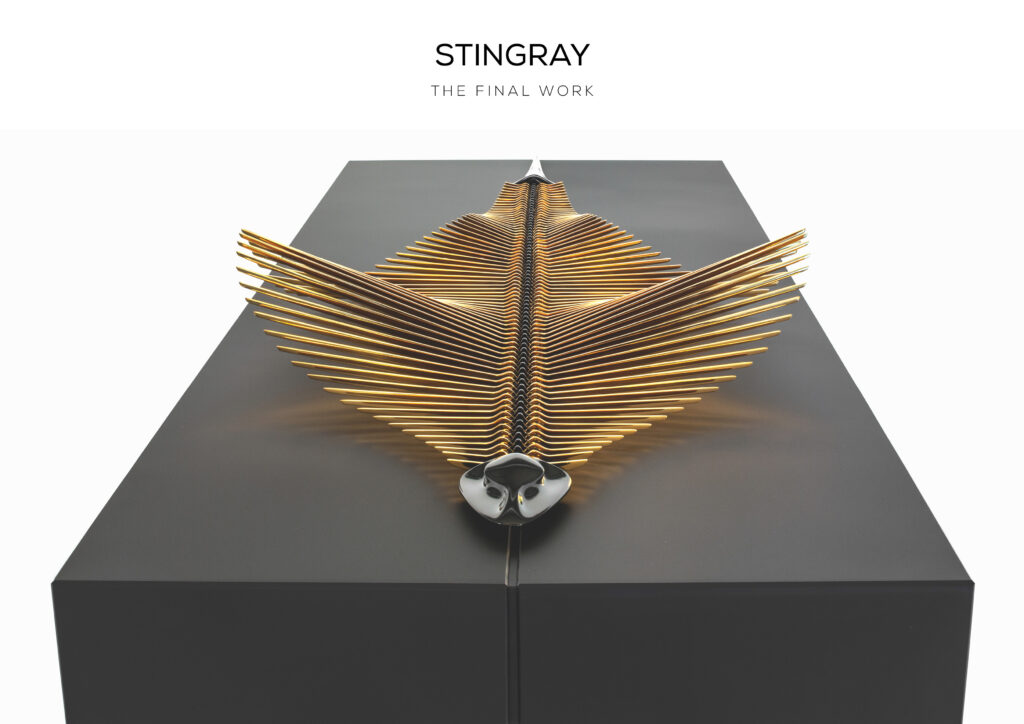
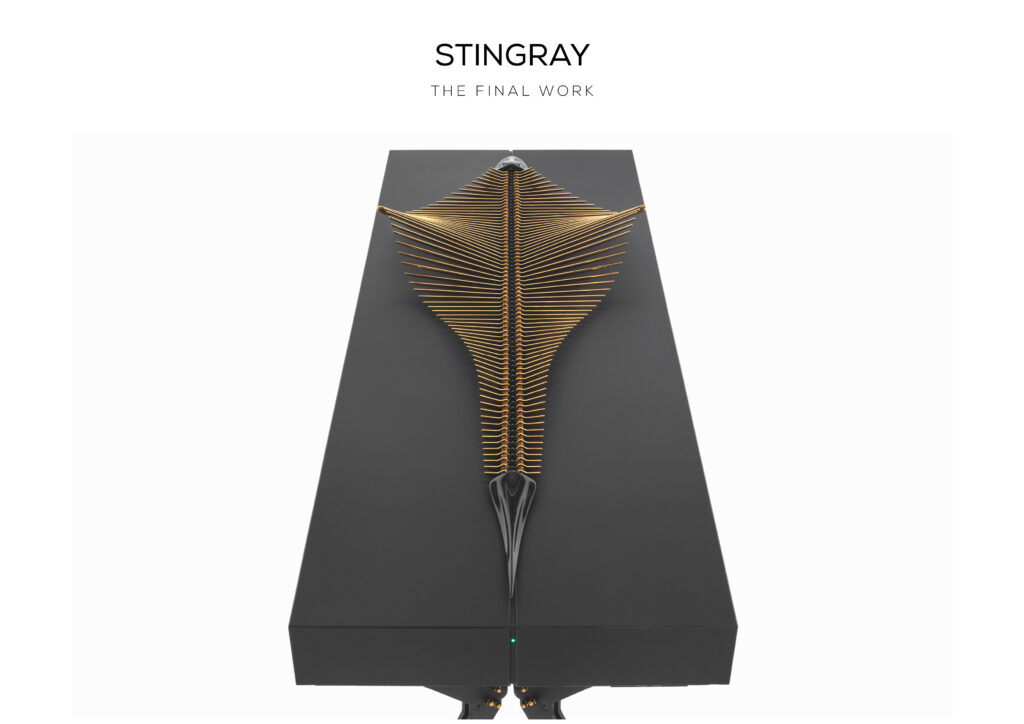
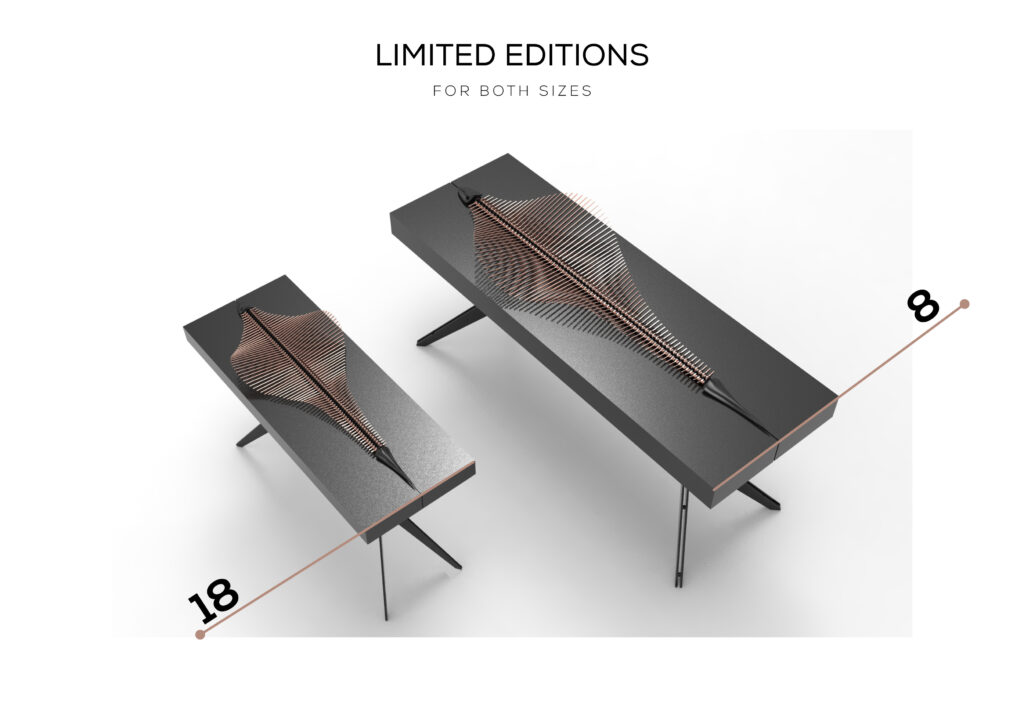
International Collaboration with MB&F
A great contribution to our success in the field of kinetic art came through an important global collaboration with MB&F. A Swiss watchmakers company, MB&F have aspired for and succeeded in producing unconventional timekeeping machines with the highest demands of technical perfection. Their unique aspirations haven’t remained limited to their production of watches. They also work with different Swiss manufacturers to co-create a range of design objects which range from writing instruments to music boxes. In 2011, MB&F ventured to further the appreciation of mechanical art in the public realm by launching the M.A.D. Gallery in Geneva. The M.A.D. stands for Mechanical Art Devices and these galleries aimed to raise recognition for artworks which worked with the technological possibilities of the world today. In the years that followed, they opened more galleries in Taipei, Dubai and Hong Kong.
One can imagine the feeling of excitement when MB&F called to collaborate with us for Stingray, allowing us to present it in their gallery. They enjoyed the conceptual idea and were highly enthusiastic to see the translation of the delicate movements of a Stingray in a kinetic machine. This investment of faith was where it all began for us, the Stingray and the mechanical art the studio followed with later.
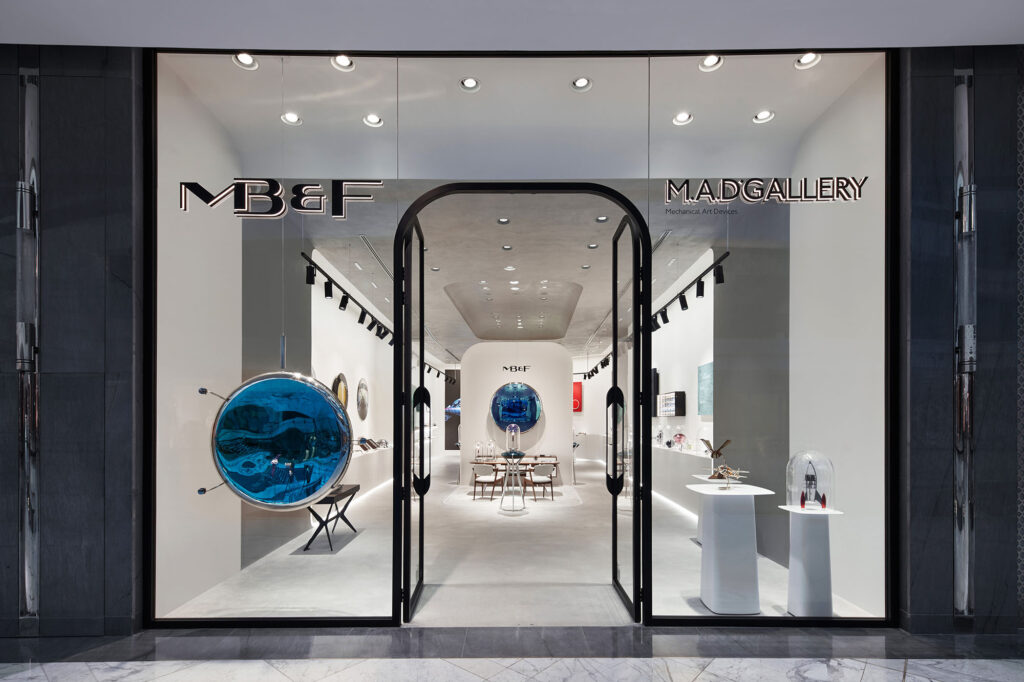

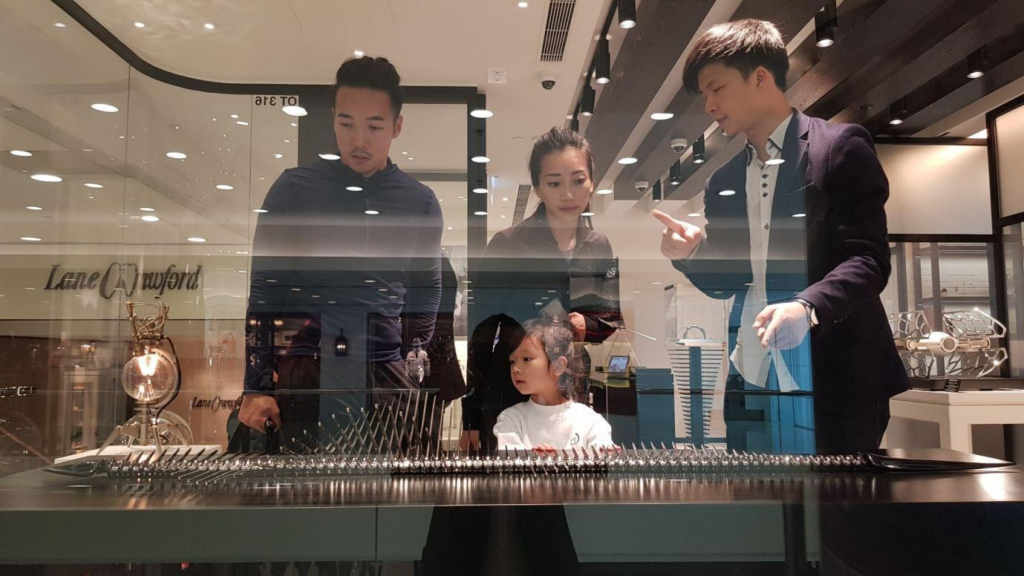
Capturing Global Admiration
The final artwork upheld its promise and stunned the people at MB&F. Stingray was displayed at the M.A.D. Gallery in Dubai with the most astounding art pieces of mechanical art. Witnessed by people from all over the world, it was no less than a dream come true when people stood entranced by it as they gazed at it. The genuine excitement in their whispered chatters and their fastened gazes became meaningful.
When we took the work to social media, the buzz was even more pronounced. We published our project on Instagram, Facebook and our Website as well. Once we shared it on our page, to our surprise, the viewership increased by itself: there was little for us to do. Videos of this kinetic sculpture gathered views by the thousands and started getting shared and reposted on virtual media galleries. Overwhelming responses from the virtual world transformed this global chatter into sales. We expanded our reach of sales by exploring limited edition pieces. These helped build a personal connection with the clients and in the bargain we got to explore some more avenues with the design and detailing of this project.
Soon this gaze of appreciation extended itself to the eyes of critics and art enthusiasts. This took the artwork to design awards like the prestigious Luxury Innovation awards 2021. Various publications started taking note and the project has enjoyed a healthy proportion of the limelight of the contemporary art scene in India. The global recognition paved the way for more kinetic artworks to be developed and designed and the stingray was the start of it all.
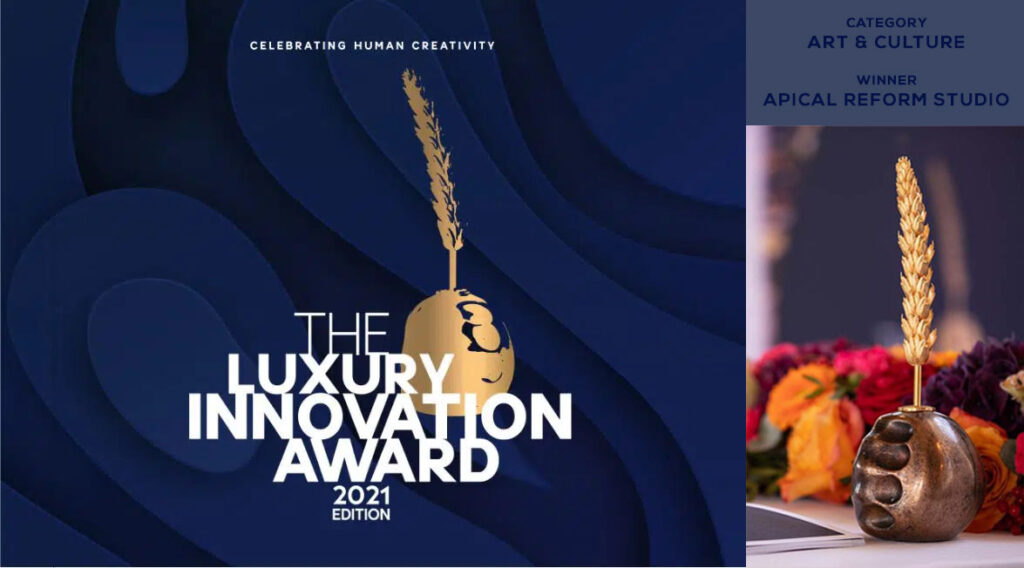
Indian Representation in the international Art World.
This global recognition has been undoubtedly helpful for our journey in this field through the cross-pollination of ideas across different cultures and countries, networking with artists across the globe and an international clientele and viewership of art. Besides individual success, the international platform has great implications in the realm of art, identity and representation of India too.
Firstly, this has helped India reach the contemporary art world. The contribution of ideas has been considerably less in recent times, especially when it comes to mechanical and kinetic art. To see Indian designers at the global level in areas of technology and art is hugely inspiring. Indian representation thus has been a very important outcome of the work we do.
Apart from representation, the global reach encourages Indian artists to explore the field of mechanical art. While traditional crafts and techniques need to be preserved, we need to embrace new ways and technologies. This exploration is essential and the incentive of representation brings greater participation of creative professionals in the realm of kinetic art.
Lessons from the Artwork
With technological changes in the last few decades, possibilities in the realm of art have shifted beyond the traditional media. Kinetic art is one such field which has the power to bring abstract ideas to life. These abstract ideas often come in the form of lessons to the careful observer. Lessons are woven in both the creative processes and the creation itself. Stingray is no exception and has some lessons in store for us too.
The Stingray is a work of dedicated technical skill. The precise calibration of its parts speaks of perfection and reveals the careful process that goes into the production of such artwork. It marks, in the age of contemporary art in India, a milestone, bridging the seeming gap between technology and intuition, the creative impulse and the technical force. Reconciling the romantic and classic parts of our imagination.
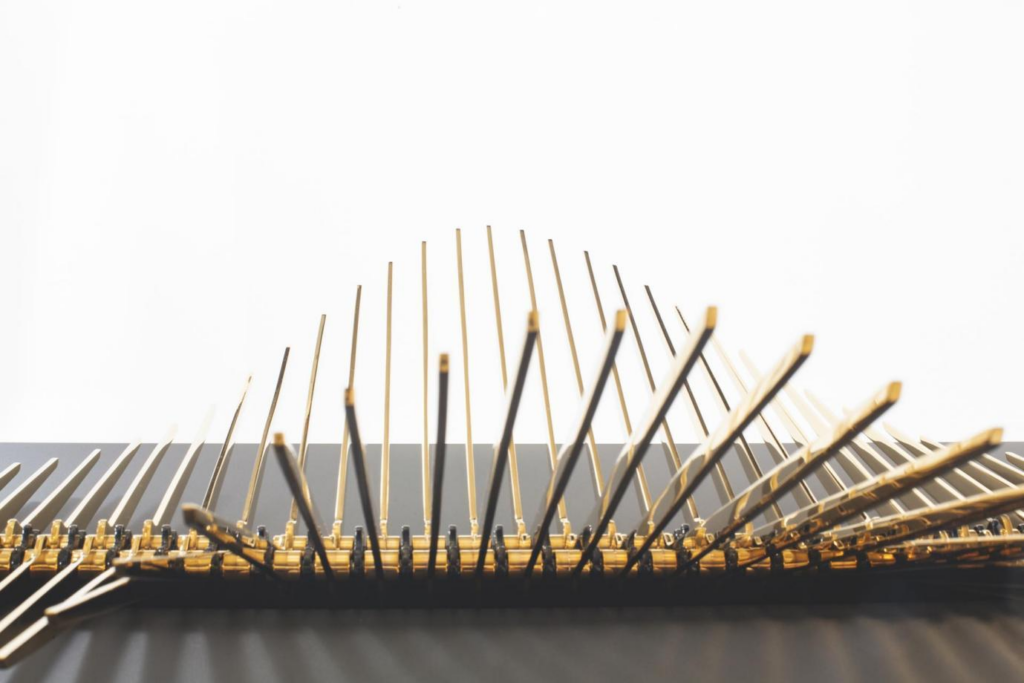
Another lesson is conveyed through its movement. The artwork talks about grace. The cartilaginous ribs turned metal create a silent symphony mimicking the undulating motion of the wings of the stingrays in deep oceans. In the quotidian tasks of life, this grace is a great reminder of the ease with which all things can be dealt with if we perform them with precision and patience.
The last lesson of reflection comes not through the process, or the artwork itself but its effect. In galleries and displays, this seemingly silent sculpture halts the hastiest of people and binds them in contemplative silence. In today’s world, where we’re constantly on the lookout for the new and the shocking, it defies all norms and whispers to its audience the simple value of reflecting on moments which make up our busy lives. It tells us to pay attention to them. It tells us to pause.
The Ray Family
The impacts of this mesmerising machine, whether therapeutic or inspirational, representational or recreational, affirmed our will and effort in this project. The response of people inspired confidence in us and planted the seed for another idea: we could expand this project into a series of similar translations of different species of the Ray family. Manta Ray, Spider Ray, Eagle ray, Electric Ray, and Devil Rays are some among the many. Most of them have characteristics which render them unique and this way there would be for the consumer and viewer a variety of instances of the same idea. For the studio, it would mean starting the design processes of each from scratch, working out movements and parts but with the familiarity of the process of development of Stingray, the journey might yield unknown explorations. It will be an exciting journey to bring these ideas to life.
Natural Inspirations
Inspiration is abundant around us. The modern world, which has largely been obsessed with the machine, naively overlooks the lessons natural inspirations have in store for us. There lurk in these objects of biological origins, a wisdom of parts: each wing and tail, highly specialized to deal with natural consequences and ultimately survival. We praise machines for efficiency but none are more worthy of this praise than these living beings on this earth.
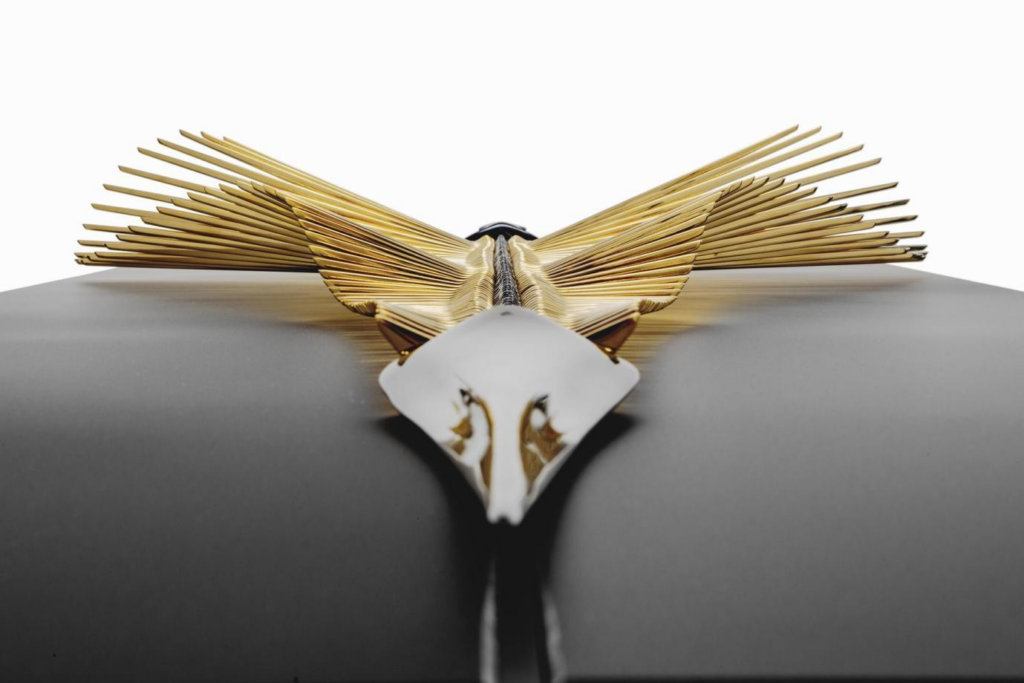
A popular way of studying natural things to design and conceptualize is called biomimicry. Biomimicry is widely used in architecture and design, often in the process of designing structures or solutions to design problems. Biomimicry can be as direct in its inspirations as a down feather bucket which uses down feathers stuffed in winter coats to keep warm and as conceptual as studying a Gecko’s toes to develop climbing pads capable of supporting human weight.
Because of this abundance of insights, there are many lessons that these natural entities offer and it is easy to get lost. There is much to investigate and more insights than we find immediate utility for. A useful method to navigate is to ask questions to them and find the answers in their form, assembly and mechanics. When we do this, we take the seed of inspiration beyond a mere lingering moment that captures our fancy. We allow it to occupy a room, open the window of questions and organize itself in the light of curiosity. The more we let the idea out of the room to walk around in the busy hive of our creative minds, the more it adapts and grows. When this inspiration matures, something of the effect of the Stingray is seen. It becomes an inspiration for others.
Such curiosity and experiments allows us to explore the tough and less explored territories.


